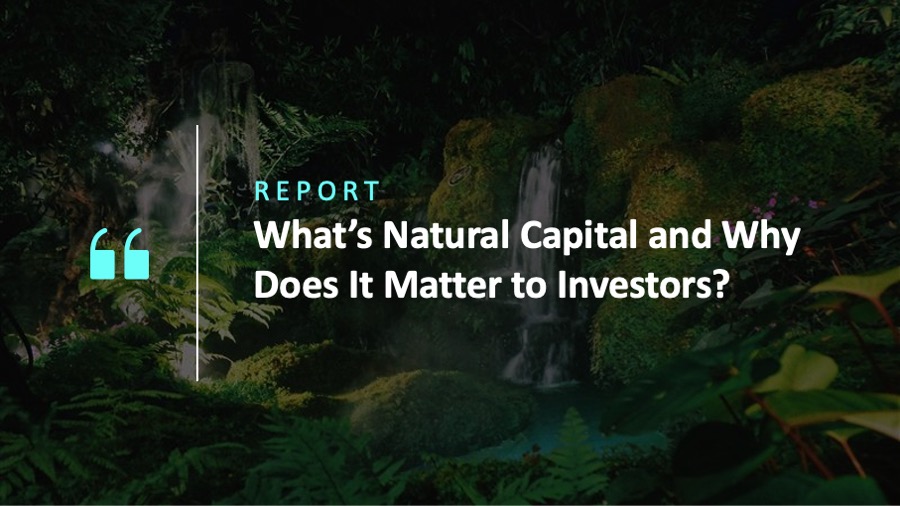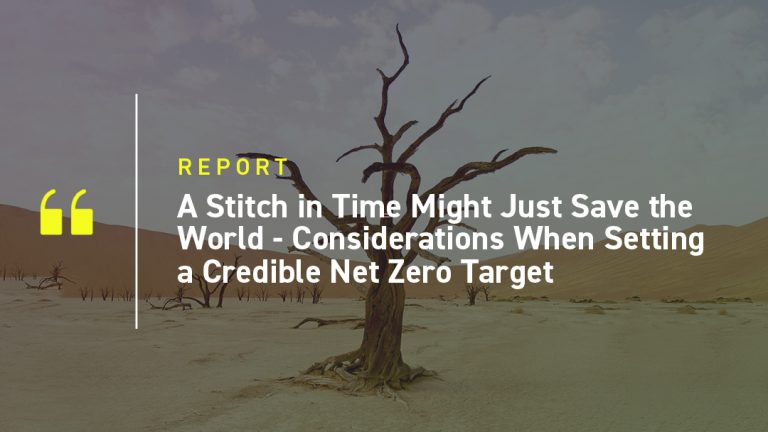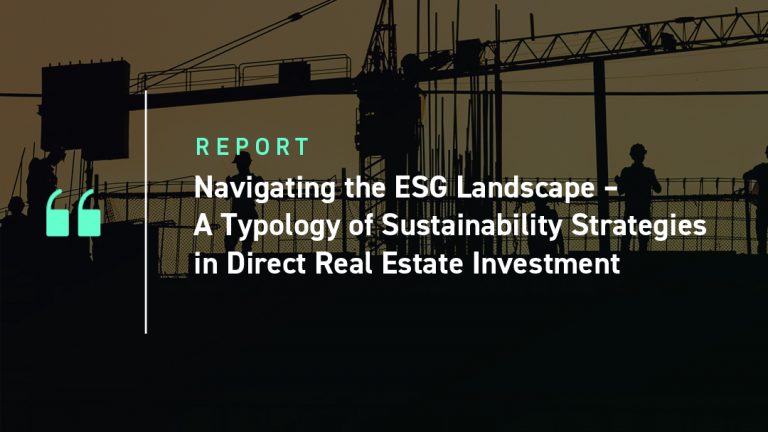This post was revised in May 2025.
Natural Capital = Assets and Ecosystem Services
Nature is everything around us: land, rivers, oceans, living organisms, climate. Nature also embodies ecosystem functions and services—such as climate regulation, water purification, carbon sequestration, and pollination—that are required for a stable planet, human well-being, and, ultimately, survival. The economy inherently depends on nature, and the functions and services it provides, to produce goods and services.
Capital is defined as an asset that adds “to the long-term net worth of a corporation” and “accumulated goods devoted to the production of other goods.” Therefore, investors can think of natural resources and their related ecosystem functions and services as yet another input that is required to produce value. Natural capital is thus a necessary consideration when assessing a company’s valuation and risk profile, similar to other types of capital in a company, such as financial and human capital.
Natural capital assets (that support ecosystem services) can be assessed across five pillars: freshwater (both ground and surface water), oceans, land (including forests and soil), biodiversity (the diversity within species and between species and ecosystems), and climate.1 Understanding the link between natural capital assets and the ecosystem services they provide is an important step to fully comprehend the risks associated with nature loss that businesses and investors face. For example, forests “are natural capital assets which support ecosystem services including climate regulation and timber,” with timber being a key raw material in industries such as construction and manufacturing.
We Are Depleting Our Natural Assets…Fast
Over roughly the past 50 years, the Earth has lost close to 70% of global wildlife, according to the WWF, a level of extinction that is happening at a greater rate than at any other time in human history (also known as the Anthropocene). Also, over the past 20 years, Earth has lost, on average, around 4 million hectares of primary tropical forests per year and with those forests has lost natural carbon storage and other critical ecosystem services. These are only two examples of how quickly nature is deteriorating.
The five main direct drivers of nature loss, according to a report by the Intergovernmental Science-Policy Platform on Biodiversity and Ecosystem Services (IPBES), are 1) changes in land and sea use (i.e., deforestation and agriculture), 2) direct exploitation of organisms (i.e., overexploitation of animals and plants, including overfishing), 3) climate change, 4) pollution, and 5) invasive species. These drivers are fueled largely by consumption patterns and population trends.
Another way to measure nature loss is through planetary boundaries. The concept of planetary boundaries was first introduced in 2009 by the Stockholm Resilience Center. This concept identifies “a set of nine planetary boundaries within which humanity can continue to develop and thrive for generations to come… [these] processes…regulate the stability and resilience of the Earth system.”
The planetary boundaries include land-system change, freshwater use, and ocean acidification, to name a few. In the latest update on the boundaries in September 2023, scientists found that six of the nine boundaries have been crossed, which “increases the risk of generating large-scale abrupt or irreversible environmental changes.”
As evidence mounts on the damage to natural ecosystems, governments, civil society, and the private sector are increasingly concerned about how these changes will affect communities and businesses globally. One of the most important initiatives to address nature loss is the Kunming-Montreal Global Biodiversity Framework (GBF), signed by 190 countries during the COP15 meeting in 2022.
What Does This All Mean for Investors?
Investors are increasingly aware of the need to better understand how nature loss poses a material risk to portfolio companies, inclusive of their whole value chains. As with climate, investors can think of nature-related risks as physical, transition, or systemic.
When conducting a nature-related risk assessment, three aspects are worth considering: impacts, dependencies, and performance (Table 1). Investors can also consider nature as an opportunity, particularly around nature-based solutions to help mitigate climate change.
Table 1: Dimensions of a Nature-Related Risk Assessment
| Dimension | Description | Data Available | Examples |
| Impact | Portfolio companies’ activities with an impact on nature that contribute to the deterioration or depletion of natural capital. | – Modeled impact data at the company and portfolio level. – Asset level or geographical data. – SDG-aligned impact data. -Publicly disclosed information (Corporate Sustainability Reporting using LEAP-TNFD Framework). | Footprinting metrics to quantitatively aggregate companies’ impact across different drivers of biodiversity loss (e.g., Mean Species Abundance [MSA] and Potentially Disappeared Fraction [PDF]). |
| Dependencies | Companies’ dependencies on natural resources, and/or the ecosystem services that these provide, to ensure operations, profitability, and access to raw materials, among others. | – Modeled ecosystem services assessments data at the company and portfolio level. – Asset level or geographical data. – Publicly disclosed information (Corporate Sustainability Reporting using LEAP-TNFD Framework). | Companies’ dependency on provisioning ecosystem services (e.g., ground water) and regulating ecosystem services (e.g., flood prevention). |
| Performance | Companies’ policies and measures in place to assess, disclose, and mitigate nature-related risks, dependencies, and impacts. | – Publicly disclosed information (Corporate Sustainability Reporting, 10Ks). -Controversies. | Companies’ disclosure on industry-specific impact indicators (e.g., measures to minimize synthetic or chemical pesticide or fertilizer use in the value chain for food products companies). |
Source: ISS ESG Natural Capital Research Institute
What’s Next for Natural Capital Data?
Data on nature-related impacts and dependencies are evolving, as international frameworks and standards are still being developed. However, there has been significant progress in this space over the past few years. Investors have information available today, both audited and modeled, that allows them to begin to incorporate nature-related considerations throughout their investment processes.
Data on nature-related risks is set to become more sophisticated in the years to come as companies increase disclosures (based on frameworks such as the Taskforce on Nature-related Financial Disclosures and Science Based Targets initiative) and as technology to access asset-level data becomes more widely available. Given that there is not a single metric to measure all aspects of nature-related risks, data will require a nuanced and industry-specific approach.
1 A more scientific classification of natural capital assets is presented in Table 3 in K. Leach et al., “A Common Framework of Natural Capital Assets for Use in Public and Private Sector Decision Making,” Ecosystem Services 36 (April 2019), https://doi.org/10.1016/j.ecoser.2019.100899.
Explore ISS ESG solutions mentioned in this report:
- Identify ESG risks and seize investment opportunities with the ISS ESG Corporate Rating.
- ISS ESG’s Biodiversity Impact Assessment Tool helps investors assess the impact of companies’ business and supply chain activities on biodiversity.
By: Mirtha Kastrapeli, Global Head of Natural Capital, ISS ESG




